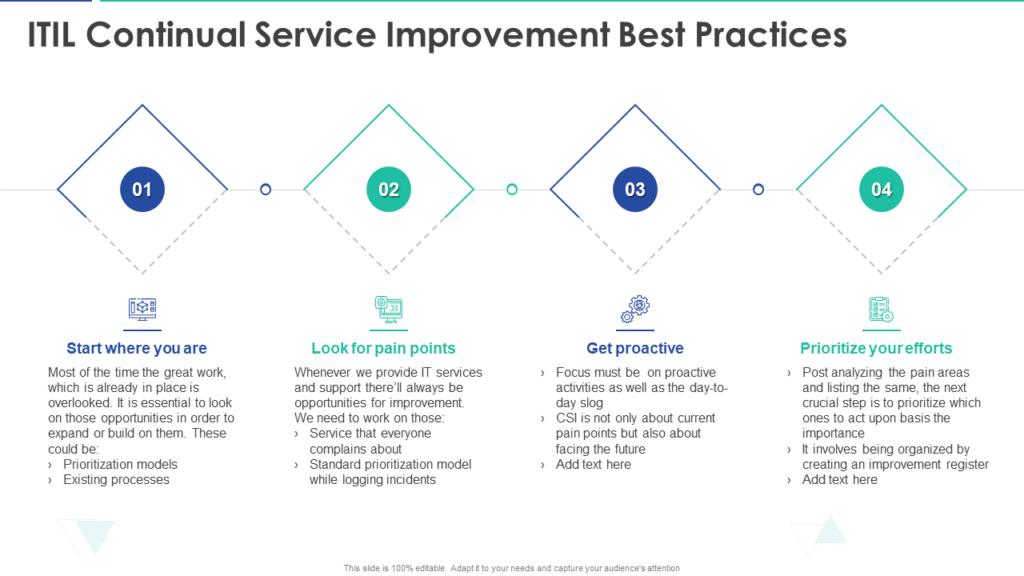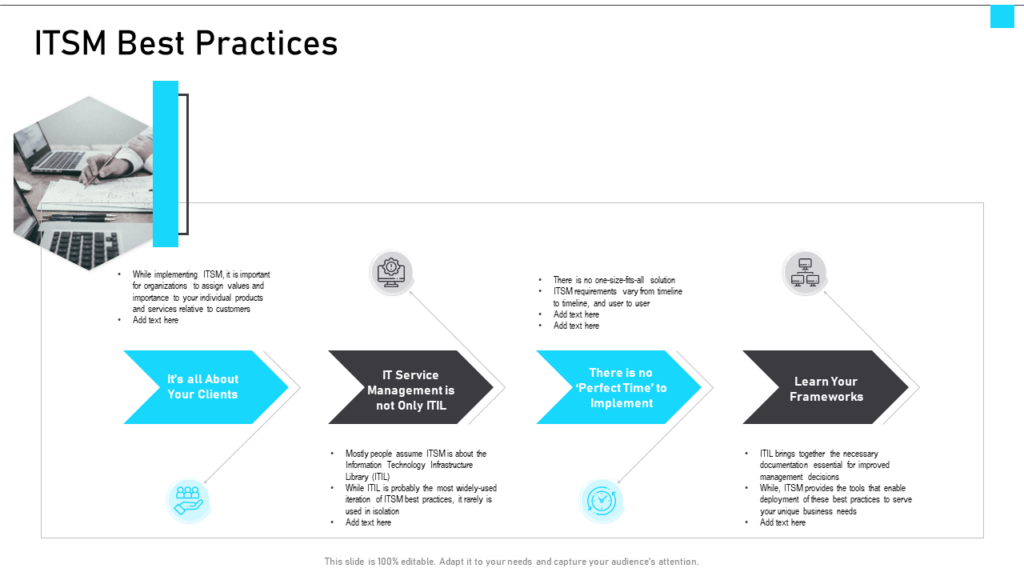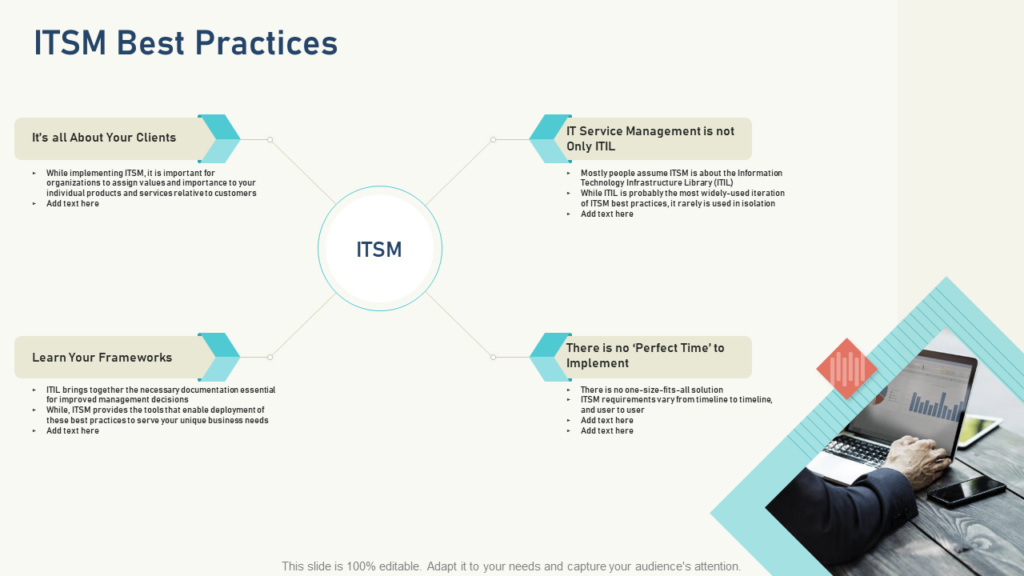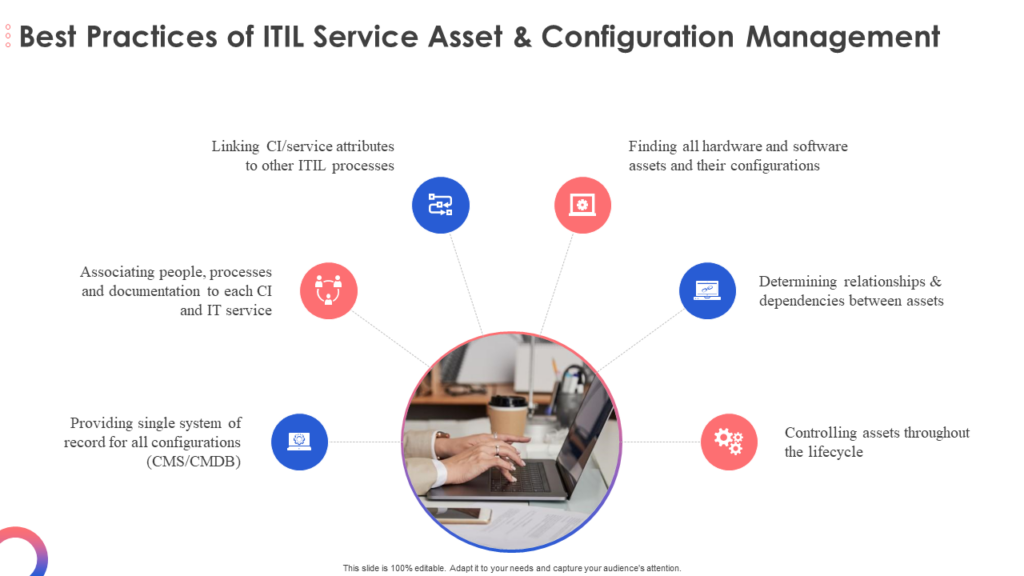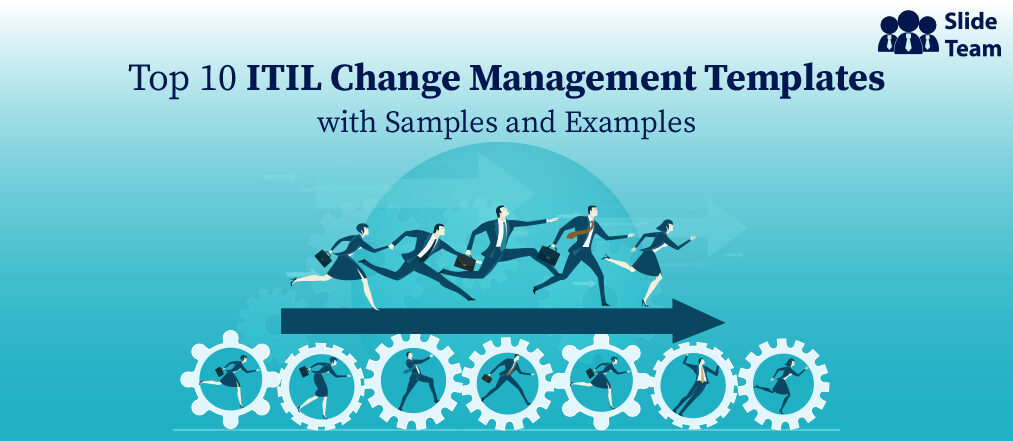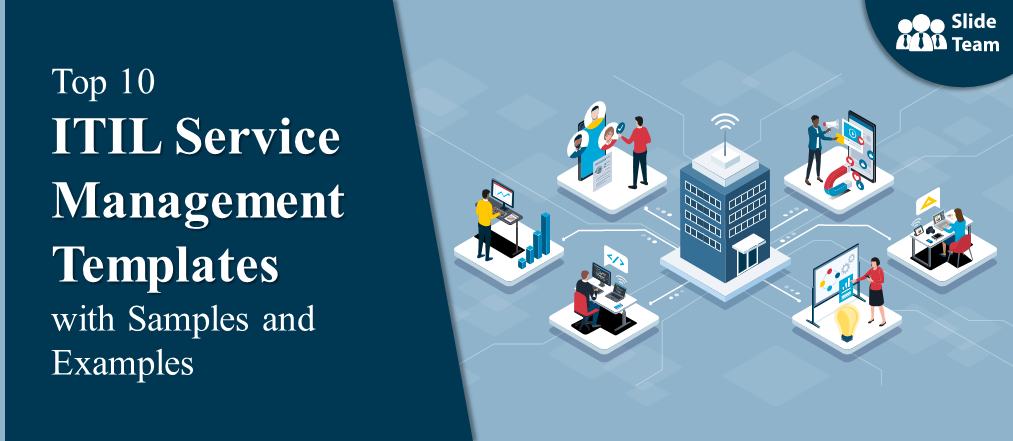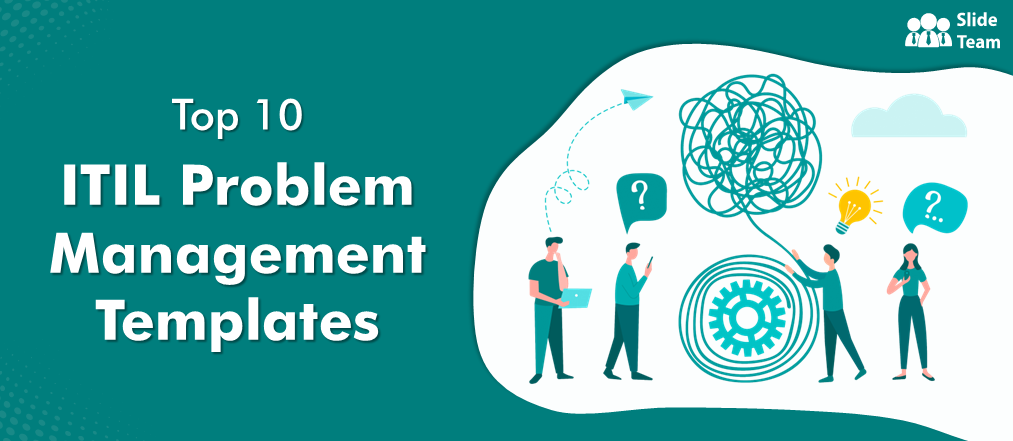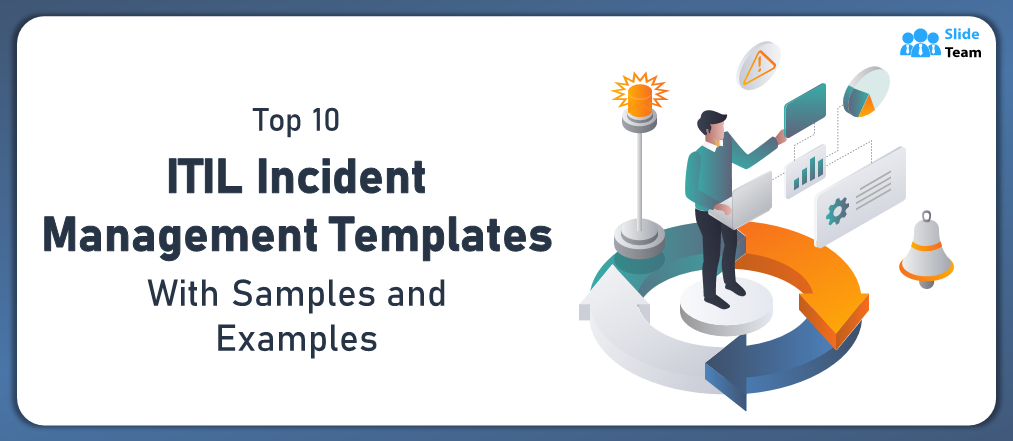Information Technology has evolved into a dynamic, strategic, and essential asset for any organization to meet its objectives. Given its significance, it continues to generate queries within companies. Among the most common are, how can we leverage the power of IT in an effective way? How can we optimize investment in these technologies? How can we mitigate the associated risks?
Fortunately, all answers are found in one solution: ITIL Best Practices, which can assist you in laying the proper foundation for your IT investments and internalizing best practices!
The ITIL best practice framework can help you keep up with end-user demands and goals. With IT help desk software, your team can track major incidents in real-time, adopt automation, cut costs, and offer continuous support to employees and customers.
In my six blogs on ITIL, I have written extensively on the ITIL journey. Starting with the framework, readers who have been with SlideTeam will know that processes, service management, change management, problem management, and incident management are all there on our website. In this blog, it's time to discuss ITIL Best Practices as a way to incorporate efficiency and a sense of order and leverage IT to its fullest potential.
If you have not yet decided to implement a powerful ITIL strategy within your organization; or want to leverage your current approach in a better way, we recommend you consider the ITIL Best Practices Templates that SlideTeam offers you to build a competitive workforce.
ITIL Best Practices Templates
These PPT Templates can save your IT services from being labeled redundant and, on the positive side, prove to be a game-changer for your business. You will be pleased to know that these PowerPoint Slides are easy to download, save, and customize.
Template 1: ITIL Continual Service Improvement Best Practices
If you want to identify opportunities in service improvement, you must consider this ITIL Continual Service Improvement (CSI) Best Practices Template. It recommends four important actions for the effective functioning of your IT services. These are: Start where you are; Look for pain points; Get proactive; and Prioritize your efforts. This PPT Slide also includes a brief description of every activity for easy understanding of the concept. Download this informative resource today to build a dynamic IT workforce.
Template 2: ITIL CSI Best Practices Template
Here’s another interesting way to present the four critical actions of ITIL Continual Service Improvement. It will help you guide your IT staff with an accessible diagram that gives an uncomplicated look to the technical concept. This layout also makes it easier for your workforce to recall the information when needed. Isn’t it a convenient way to prepare a competitive team and streamline your ITIL implementation journey? Download it now to stay ahead of the competition.
Template 3: ITSM Best Practices
Presenting ITSM Best Practices Template to help you quickly meet end users' and customers' demands and drive business value. This PowerPoint Slide will help you analyze ITSM capabilities and maturity, identify systematic gaps, and define a practical roadmap. It entails valuable key learnings for the effective functioning of your IT department. These are:
- ITSM is all about your clients
- ITSM is not only ITIL
- There is no “perfect time” to implement
- Learn your frameworks
Download this PowerPoint Template now to deploy, integrate, and manage your ITSM tools.
Template 4: ITSM Best Practices Template
Here is another way of presenting ITSM best practices to build a knowledgeable workforce. It includes a circular diagram surrounded by four tabs that display workable recommendations for implementing ITIL in the most effective manner. In this layout, you will find a brief description of activities below every tab to give a direction to your ITIL implementation journey. Download this PPT Framework to develop actionable strategies for achieving digital transformation goals.
Template 5: ITIL SACM Best Practices Template
If you want to ensure that the assets required to deliver IT services are properly controlled and that accurate and reliable information about those assets is available, then you must employ this template to guide your team. This PPT Slide includes ITIL Service Asset & Configuration Management (SACM) best practices that your employees can follow for a smooth transition. It suggests six crucial practices that every organization must consider for successful service delivery to end users and customers. Grab it now to nail SACM and improve your organization’s IT quotient!
Ready to Deploy ITIL Best Practices?
For decades, businesses have used ITIL best practices to enhance their business processes, lower costs, and improve the experience of IT service users. There isn't a better moment than now for your company to go down the same road.
Initially, you'll need to explain the value and benefits of ITIL to department heads to gain their confidence. You can begin the process by downloading these ITIL Best Practices Templates available only on SlideTeam. Get started today!
PS If you want to implement ITIL Framework in your organization, download these handy templates to streamline the transition process.
FAQs on ITIL Best Practices
Where are ITIL Best Practices Applicable?
ITIL Best Practices are useful in a variety of fields when it comes to helping IT service management. Here is where ITIL is applicable:
Asset Management
Change Management
Incident Management
Release Management
Help Desk Management
Knowledge Centre Management
Endpoint Control
With organizations looking for ways to stay ahead of the curve, IT spending is predicted to reach unprecedented levels. As a result, many companies are looking for ways to improve efficiency and manage increased demand.
What are the five ITIL Categories?
The framework of ITIL is divided into five broad stages or categories:
Guiding principles
Guiding principles form the strategy laid down for IT Infrastructure Management for secure collaboration and increased business value.
Governance
Governance is critical and more like a framework to align our organization with its activities. It also allows control and ensures that all activities comply with the guiding principles of ITIL to achieve goals.
Service value chain
The Service Value Chain (SVC) is a network of linked activities required to realize the value and provide benefits to end users.
Continual improvement
Implement continuous improvement across the entire service lifecycle. ITIL 4 offers a Continual Improvement model applied to all facets of products and services.
Practices
Practices are one of the most critical parts of the service value chain that allows businesses to deliver valuable services to the end user.
What are the five stages of the ITIL Framework?
The following stages mark the ITIL Framework:
Service Strategy- It describes business goals, customer requirements, and how to align the objectives of both entities.
Service Design - It outlines practices for the formulation of IT policies, architectures, and documentation.
Service Transition – This is akin to advise on change management that also guides administrators in handling environmental concerns.
Service Operation - It offers ways to manage IT services on a daily, monthly, and yearly basis
Continual Service Improvement - It covers how to introduce improvements and policy updates within the ITIL process framework.
What is the ITIL Maturity Model?
The ITIL maturity model is a comprehensive tool that organizations can use to assess their service management capabilities. The model provides criteria for achieving levels of maturity for the Service Value System (SVS). By using the ITIL maturity model, organizations can identify areas where they need to improve and focus their efforts. The ITIL maturity model is an essential tool for any organization that wants to improve its service management capabilities and deliver value to its customers.


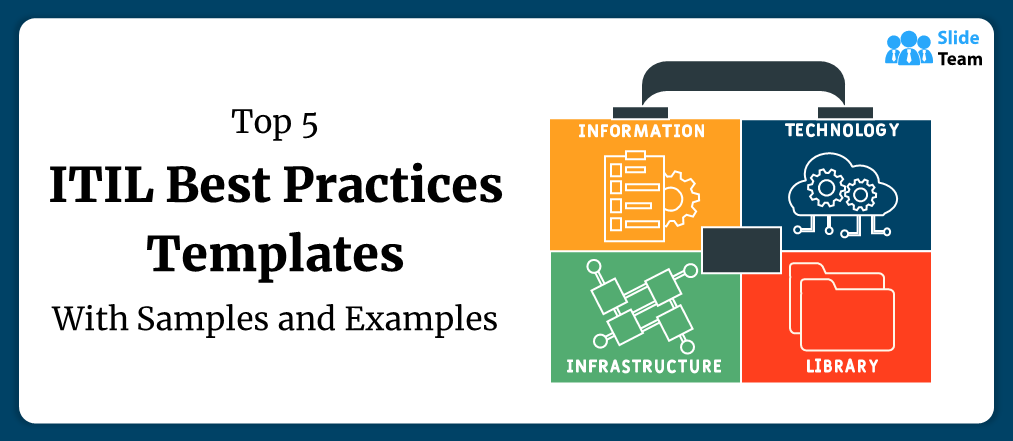


 Customer Reviews
Customer Reviews


